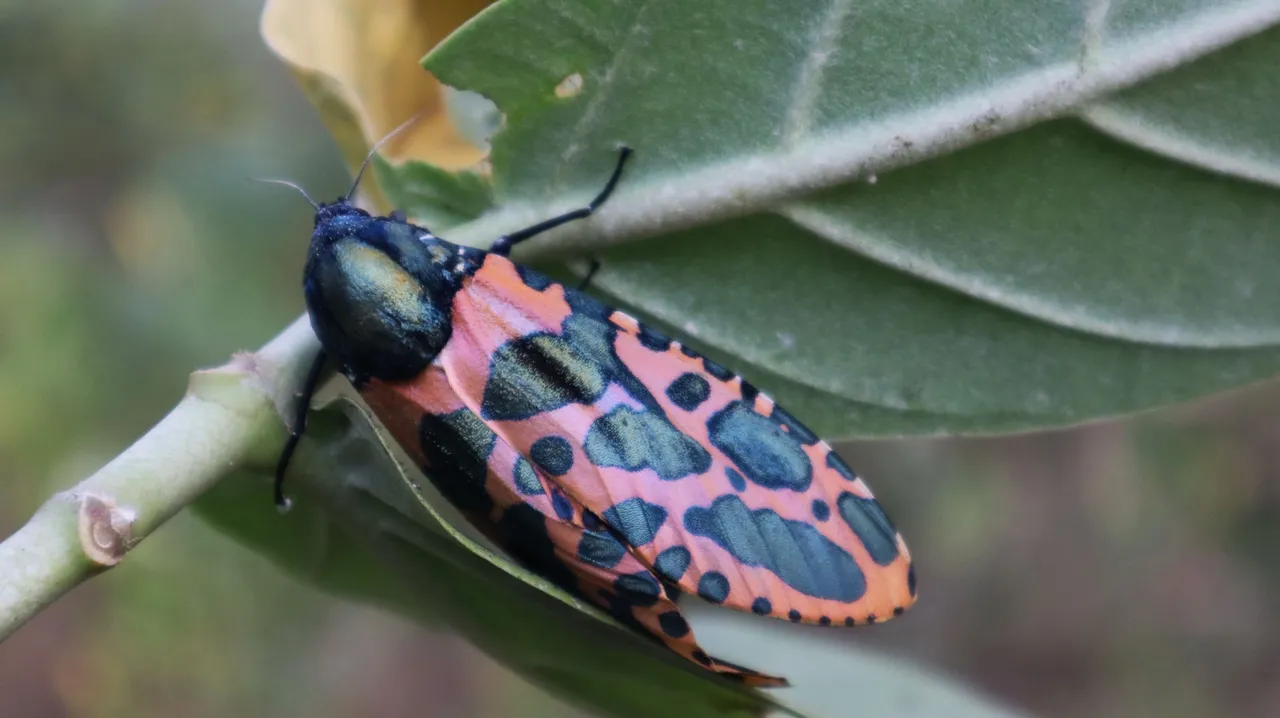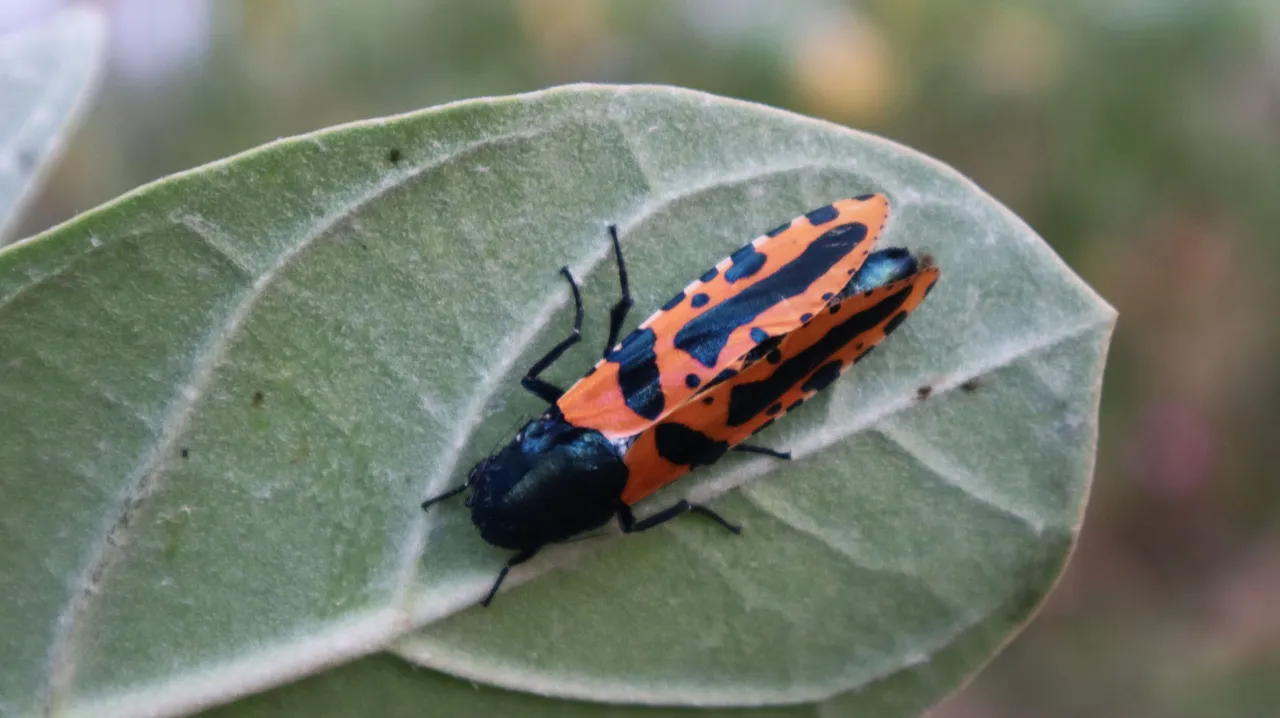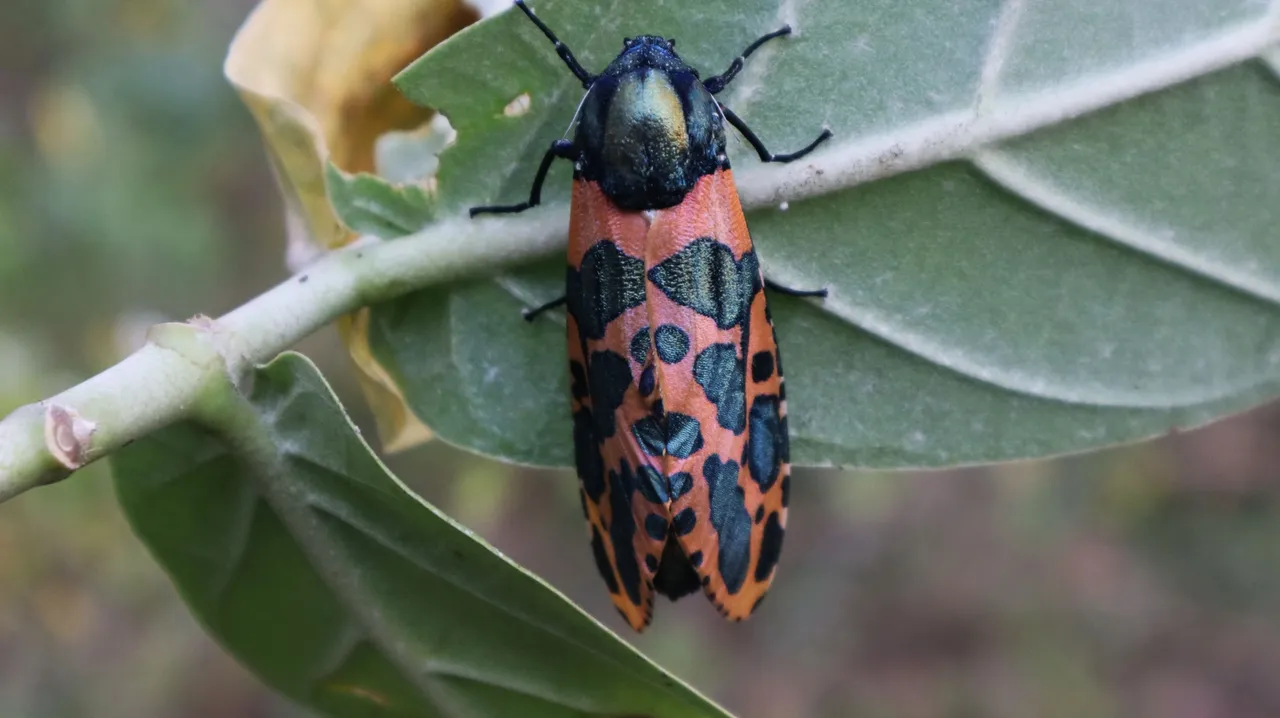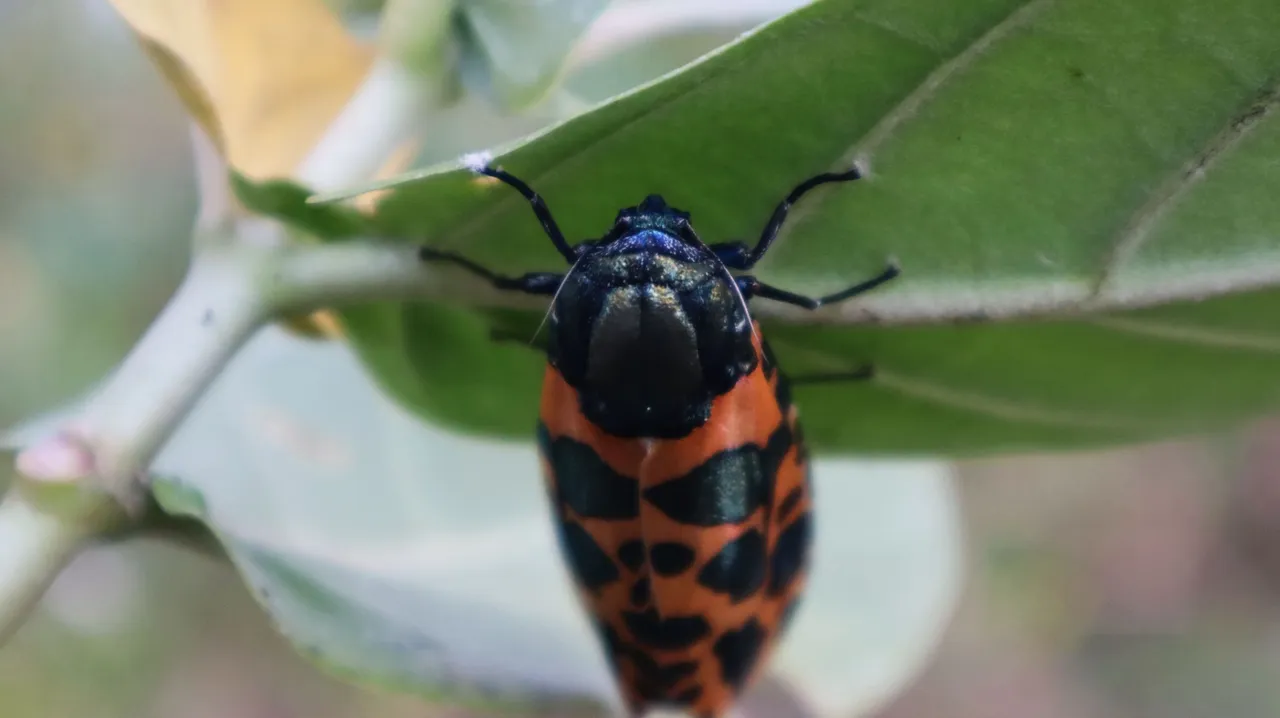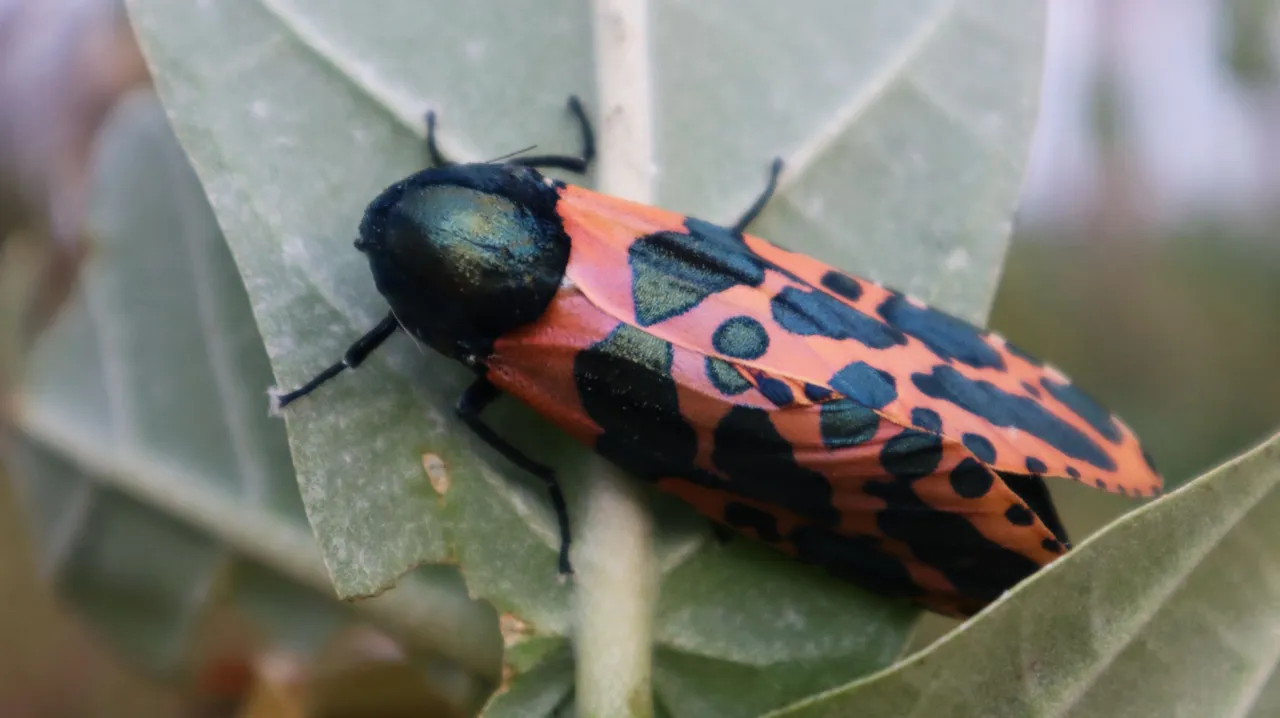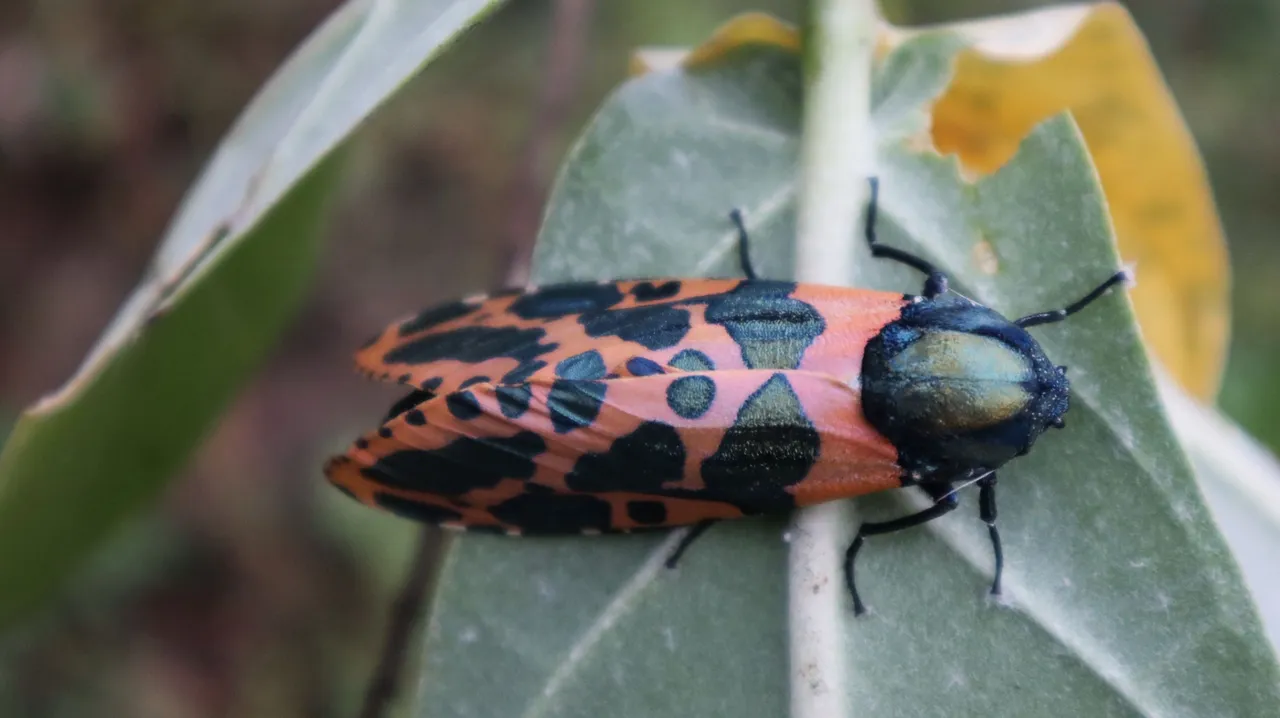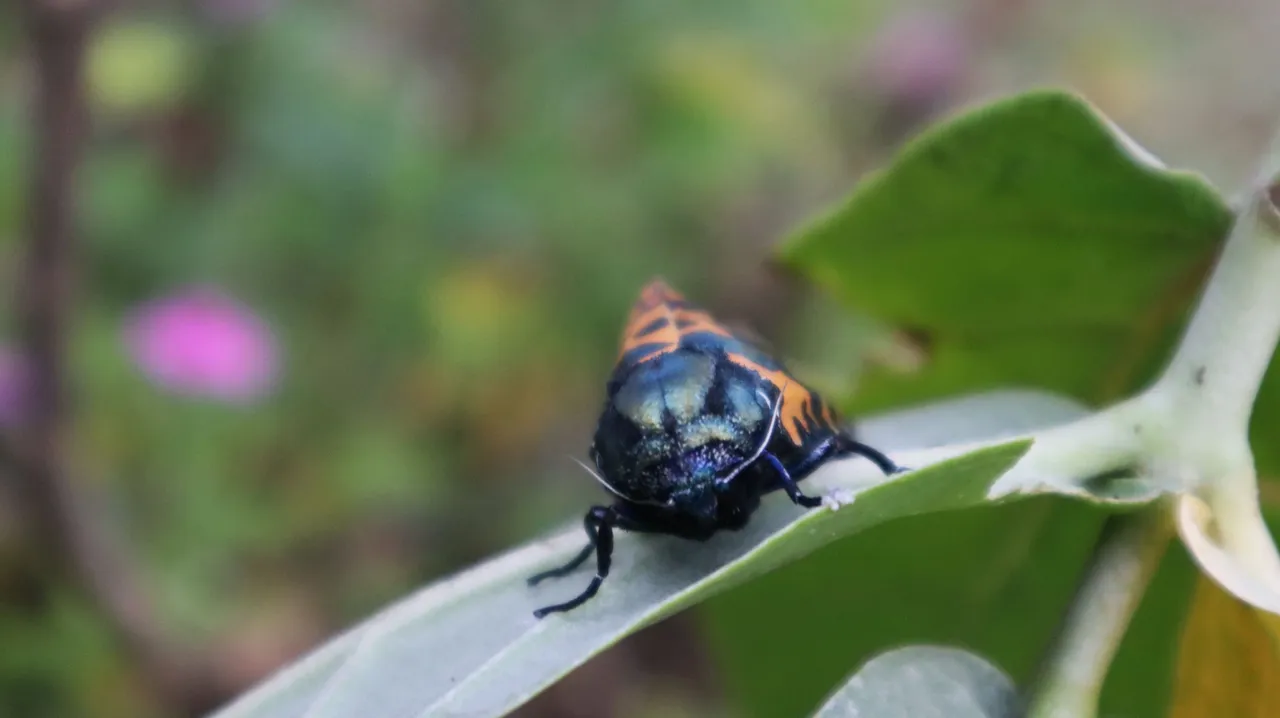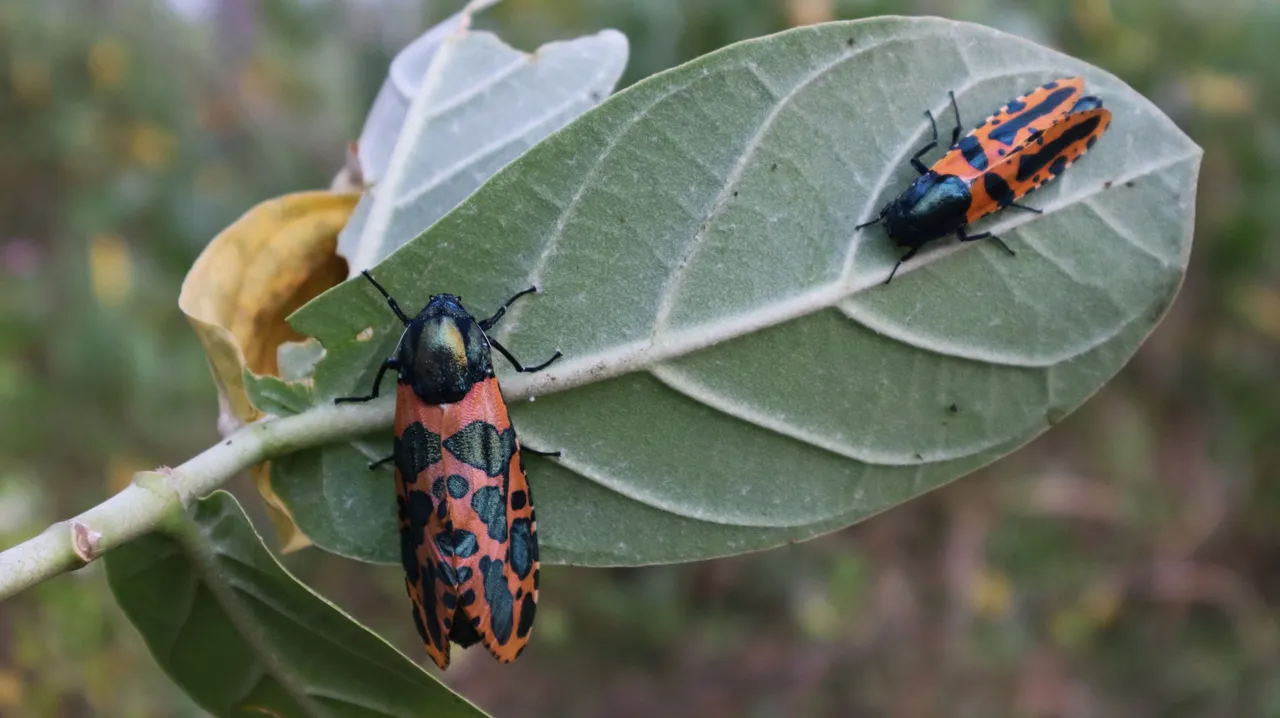
When I look at this one, it turns out that it has some similarities with the Hypercompe scribonia, a moth in the Erebidae family, or what is also called the giant leopard moth. I think the shape of the head, thorax, wings, abdomen is similar to the giant leopard moth, and what is more similar is the size of sexual dimorphism in which adult males are longer than adult females such as giant leopard moths where males can reach 51 mm and females 30 mm. But what clearly distinguishes the two species is the color and pattern of the spots. The hypercompe I found is orange with black spots sparkling slightly greenish orange, and the pattern of the spots is sometimes longer and wider than that of the giant leopard moth, while the abdomen is dark blue and streaked with orange. From this point of view, the two species look very different.

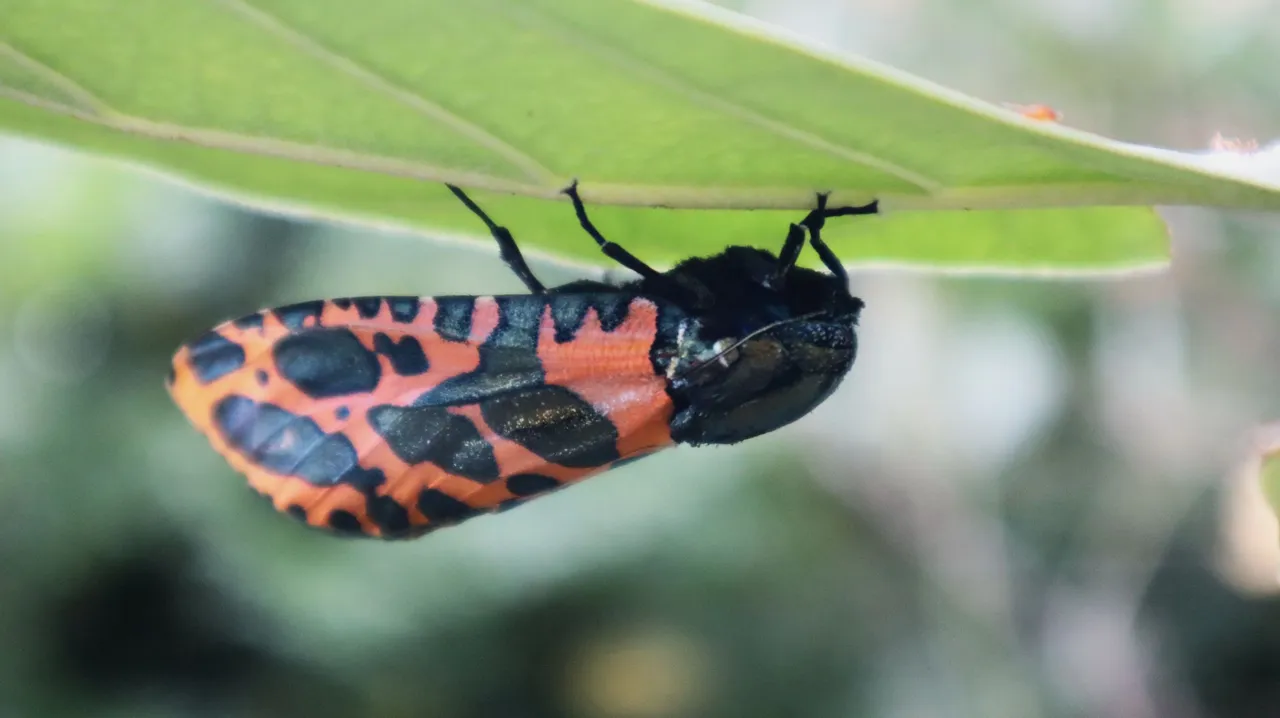
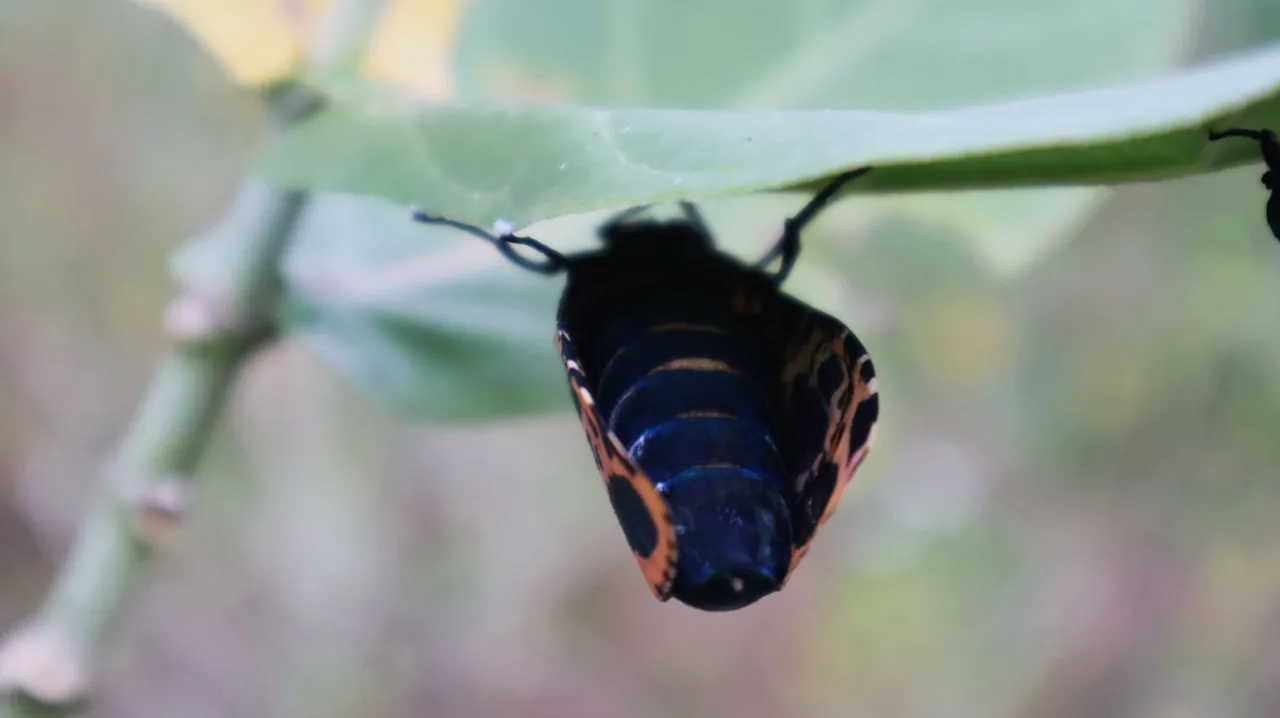
Hypercompe is a genus of tiger moths in the family Erebidae which was erected by the German entomologist Jacob Hübner in 1819. I have tried to check several sources to identify this Hypercompe I found, but the explanation I found from these sources was about the various species of Hypercompe that were found. in eastern North America and South America, and even then on average don't contain images (check this one out). So, as far as I have checked for a while now, there is no information that I get for Hypercompe species like this that is found in Sumatra (Indonesia), maybe even in Southeast Asia.
I found that pair of Hypercompes, at twilight, and both of them were perched under the broad leaf of the Calotropis gigantea plant, perhaps, that's the same as the leopard moth who likes broad leaves. However, while the Hypercompe pair seem to have stuck there for some time before then, I'm not really sure if they or their caterpillars were feeding the plant. They may be there for a dark place or away from the sun for the process of mating (like the leopard moth), or maybe it is also for waiting for the night to then fly to other plants such as Ricinus which can be found in the vicinity where I find them.
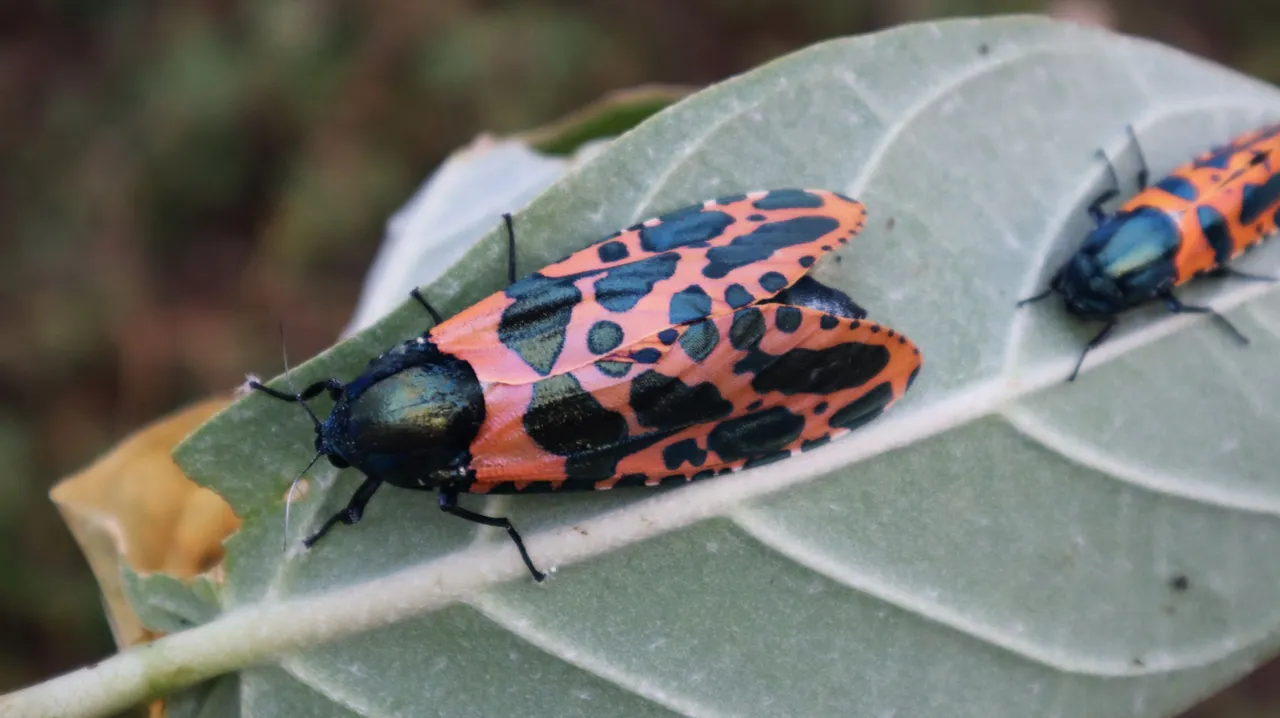
Because they were so calm, I tried turning the leaves over so they could be seen more clearly. The following are other pictures, and I hope this post can be of information for entomologists who are interested in Hypercompe, while for myself this is of course in order to densify nature-appreciation (DNA). Thank you!
